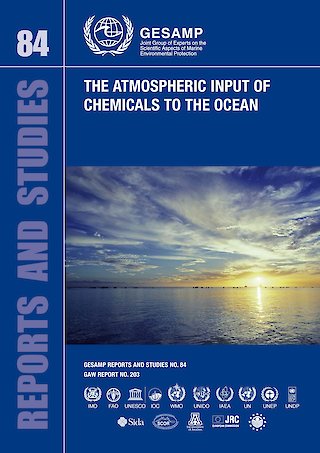
- 2012 #84 (74p.)
- Author(s): GESAMP
- Publisher(s): IMO
- Journal Series GESAMP Reports and Studies
GESAMP Reports and Studies No. 84
The atmospheric input of chemicals to the ocean is closely related to a number of important global change issues.
For example the increasing input of atmospheric anthropogenic nitrogen species to much of the ocean may cause a low level fertilization of the ocean that could result in an increase in marine 'new' productivity of up to ~3% and thus impact carbon drawdown from the atmosphere. However, the increase in nitrogen inputs are also likely to increase the formation of nitrous oxide in the ocean. The increased emission of this powerful greenhouse gas will partially offset the climate forcing impact resulting from the increase in carbon dioxide drawdown produced by N fertilization. Similarly, much of the oceanic iron, which is a limiting nutrient in many areas of the ocean, originates from the atmospheric input of minerals as a result of the long-range transport of mineral dust from continental regions. The increased supply of soluble phosphorus from atmospheric anthropogenic sources (through large-scale use in fertilizers) may also have a significant impact on surface-ocean biogeochemistry, but estimates are highly uncertain.
This report is the culmination of work undertaken by the GESAMP Working Group on the Atmospheric Input of Chemicals to the Ocean to address a number of these issues.